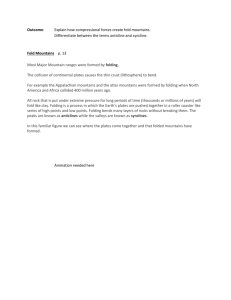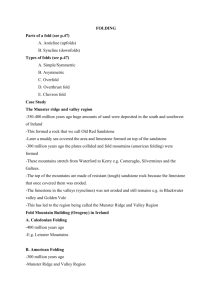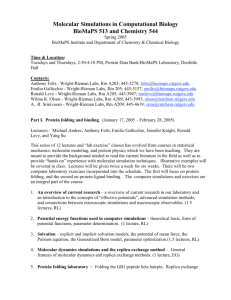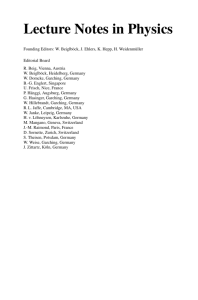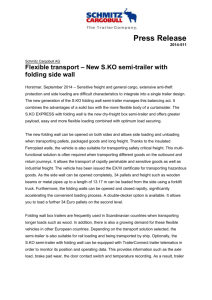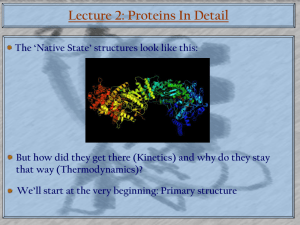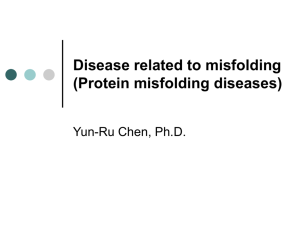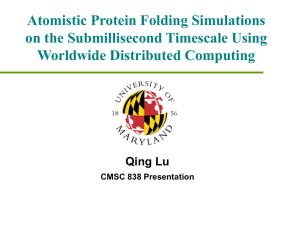Faculty Project Form - Duquesne University
advertisement
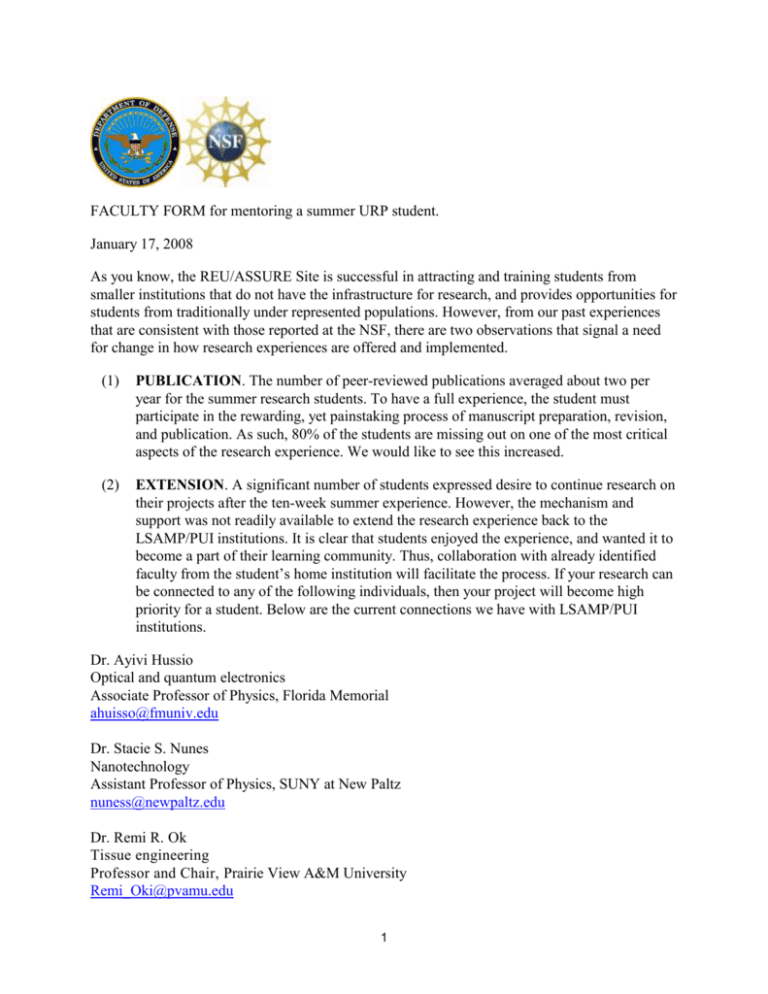
FACULTY FORM for mentoring a summer URP student. January 17, 2008 As you know, the REU/ASSURE Site is successful in attracting and training students from smaller institutions that do not have the infrastructure for research, and provides opportunities for students from traditionally under represented populations. However, from our past experiences that are consistent with those reported at the NSF, there are two observations that signal a need for change in how research experiences are offered and implemented. (1) PUBLICATION. The number of peer-reviewed publications averaged about two per year for the summer research students. To have a full experience, the student must participate in the rewarding, yet painstaking process of manuscript preparation, revision, and publication. As such, 80% of the students are missing out on one of the most critical aspects of the research experience. We would like to see this increased. (2) EXTENSION. A significant number of students expressed desire to continue research on their projects after the ten-week summer experience. However, the mechanism and support was not readily available to extend the research experience back to the LSAMP/PUI institutions. It is clear that students enjoyed the experience, and wanted it to become a part of their learning community. Thus, collaboration with already identified faculty from the student’s home institution will facilitate the process. If your research can be connected to any of the following individuals, then your project will become high priority for a student. Below are the current connections we have with LSAMP/PUI institutions. Dr. Ayivi Hussio Optical and quantum electronics Associate Professor of Physics, Florida Memorial ahuisso@fmuniv.edu Dr. Stacie S. Nunes Nanotechnology Assistant Professor of Physics, SUNY at New Paltz nuness@newpaltz.edu Dr. Remi R. Ok Tissue engineering Professor and Chair, Prairie View A&M University Remi_Oki@pvamu.edu 1 Dr. Ramaiyer Venkatraman Crystal engineering Associate Professor, Jackson State University ramaiyer.venkatraman@jsums.edu Please fill out the easy and quick form below. I give an example to illustrate the types of responses needed. Substitute your responses below. -------------------------------------------------------------FACULTY FORM for mentoring a summer URP student. Return this part to evanseck@duq.edu Mentor Name: Jeff Evanseck Date: January 17, 2008 Number of students for project: One 1. Provide the goal of the summer research project: The goal for the summer research project is to disrupt a critical salt-bridge in the trp-cage miniprotein to observe its consequences on structure, dynamics and folding. 2. Co-workers/collaborators: The student will work with one other graduate student on this project. In this particular example, there is no experimental component. The student will utilize the experimental data published in the literature. However, in other descriptions, it would be useful to know if there is a computational component to the project. 3. Instrumentation, techniques, methods learned: The student will learn how to use Duquesne’s supercomputers to carry out molecular dynamics simulations using the CHARMM program. A one-microsecond condensed-phase MD simulation takes less than two-weeks using 8-processors. Thus, the student will have time to learn how to simulate (2 weeks), carry out the simulation (2 weeks), and have the remaining time for analysis and writing. 4. Publication aspiration: The project is designed as part of a larger, on-going effort. Since the salt-bridge is currently thought to be a key factor in the dynamics of the system, the targeted journal for publication is in ACS Biochemistry. The data may be published as a stand a lone piece of work submitted to Biochemistry, or incorporated into a larger more comprehensive J. Am. Chem. Soc. manuscript. 5. LSAMP Collaboration: It might be possible to connect this research with Prof. Huisso at FMU or one of the faculty in his Department. I have requested that he consider collaboration or identify the appropriate faculty at FMU. 2 6. Project Description: (helps with recruitment – if I get enough of these, I’d like to post them on the web) Impact of Trp-Cage Salt-Bridge on Protein Folding (Experimental Faculty Mentors: None. Theoretical Faculty Liaison: J. D. Evanseck) Background: The salt-bridge (bright red in Figure 1) in the smallest known folding sequence, trp-cage miniprotein (20-residues), will be studied using all-atom simulations in explicit water to provide a microscopic interpretation of folding. Despite the extensive experimental and theoretical work reported on trp-cage, critical issues surrounding a microscopic understanding remain unanswered. First, the molecular reasons for stability of trp-cage are not fully appreciated. Second, the folding process of the miniprotein remains a mystery. To probe a strong intramolecular force within trp-cage, the effects of the Asp9Gly mutation on the structure and kinetics will be studied. Project: This project uses molecular dynamics simulations to generate a series of one microsecond trajectories to understand the structure and dynamics of trp-cage folding and unfolding. The student will use 16 processors on the new supercomputer at Duquesne. A total of four trajectories will be carried out two at a time, which will take two weeks in total. Thus, the student will have four independent simulations for analysis and comparison to four natural trp-cage simulations previously carried out. The student will master the use of the CHARMM program for both data generation and analysis. In addition to the final URP seminar, the student will be expected to complete a first draft of a manuscript on this work. Figure 1. Electrostatic map of trp-cage Significance: The health relatedness of understanding biomolecular folding and misfolding is critical to understanding and controlling highly debilitating and increasingly prevalent diseases. Recent research has shown that these specific diseases depend upon aggregation of misfolded proteins that escape the cellular quality-control mechanisms. For example, misfolded proteins have been implicated in neurological disorders, such as Alzheimer’s disease. In this research, the ensembles of intermediates and transition states sampled during the folding process of trp-cage can lead to understanding the folding code of biological systems, and provide measures to rectify misfolding events. 3

